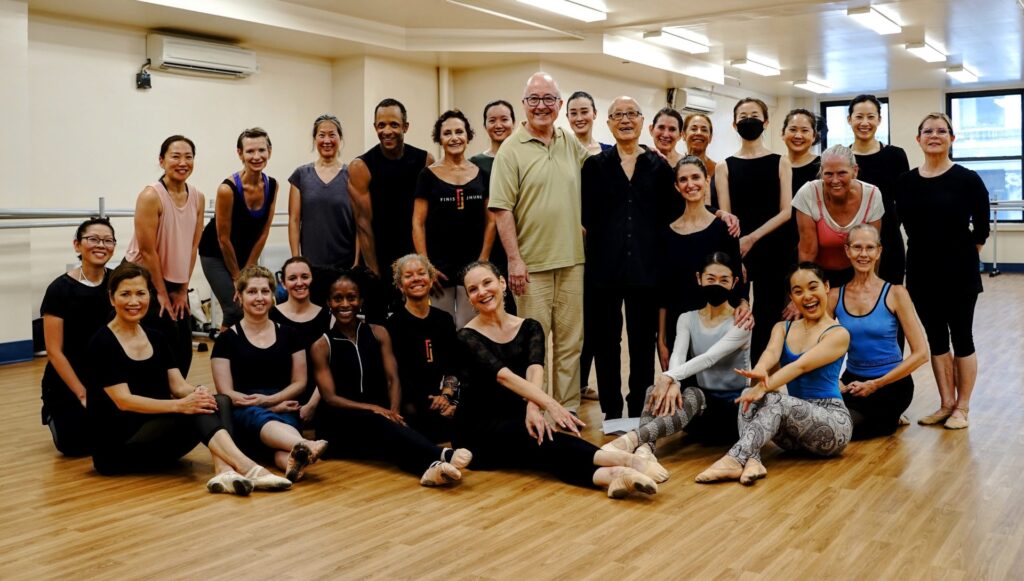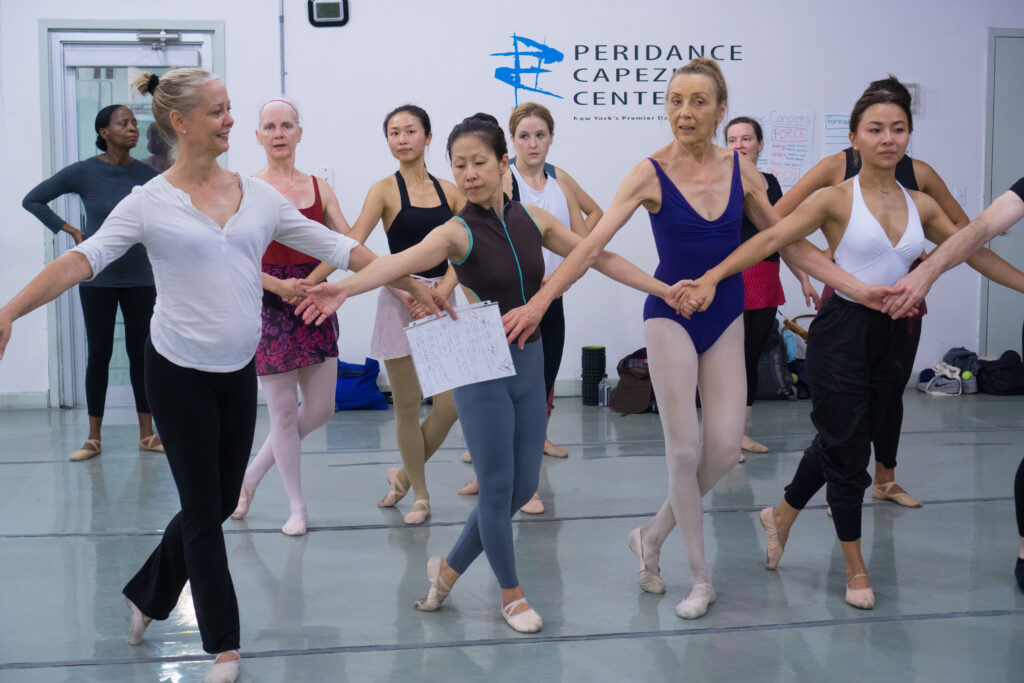
Conventional wisdom in the dance world suggests that it’s vital to start young. Given the changes we all see and feel in our bodies as we age, it’s easy to understand why. But there are plenty of professional dancers who started in their teen or adult years and still rose to the top of their fields. There’s also evidence that hyperspecializing at a young age, as so many dancers are encouraged to do, is actually detrimental in the long run.
So, if you’re working with adult students, should you really expect that there are certain physical feats—especially when it comes to flexibility—that they won’t be able to tackle? Or can a motivated adult student achieve the same heights as someone who starts dancing in toddlerhood? Dance Teacher asked two master teachers to weigh in.
Strength and Flexibility
Finis Jhung and Kat Wildish—both renowned teachers of adult dancers—have unique perspectives when it comes to developing their students’ strength and flexibility.
Jhung states that it’s important to focus on flexibility while building a solid foundation of strength. “I’m not a ‘position’ teacher. I never have been,” he says. “Everything is movement. And I believe that’s the reason most people want to dance. They want to move, they want to be graceful. So I make them work hard. I teach them what muscles to use, and every exercise we do is to give them the strength they need so that they can dance across the floor.”

Jhung also adds that “when it comes to adult students, we must establish an upright posture, identify proper turnout from the hip socket, make clear that the feet move and shape the legs, and make the body flexible by bending and twisting the spine along with movements of the shoulders and arms.”
Wildish believes that most adult students will benefit far more from exercises to strengthen their core, glutes, and quads than they will from excessive stretching. “In their daily lives, most adults just walk forwards,” she adds. “They need to build the balance and coordination to move sideways and backwards.” Though Wildish does believe that stretching can be helpful, she prefers active stretching over static stretching, and believes students should be monitored to make sure they aren’t stretching incorrectly and hurting themselves. She teaches a special stretching class for this purpose, so that dancers can master stretches under supervision.
Achieving higher extensions isn’t just about flexibility, anyway—it requires strength. And strength will help dancers in every part of class. Physical capabilities vary even more among adults than they do among younger students, because adults are more likely to have had significant injuries or to be managing chronic medical conditions, so it’s important to take a highly individual approach when considering how far to push each dancer.
Confidence is Key
Another reason to avoid an overly singular focus on flexibility: Dancers’ self esteem might take a hit. Achieving higher extensions can be tough even for very experienced dancers, so rather than focusing only on getting legs into the air, work on laying the foundation for other intermediate steps like small jumps and pirouettes. “That helps them build confidence, because they’re doing the same steps they see dancers do on stage,” says Jhung.
What About Pointework?
Is it ever appropriate for a dancer who started as an adult to dance on pointe? Many teachers might not be comfortable with the idea. But Wildish believes it can be done, and has numerous students who have achieved this goal. It takes dedication, but that’s true for younger students, too. “If you’re 12 years old and you’ve been goofing off for the last two years, you’re not going to be ready to dance on pointe, either,” she says.

On average, says Wildish, highly motivated adult dancers need to train seriously for about three years before they can consider moving toward pointework, taking a minimum of three ballet classes per week—preferably four. “One class a week, you’re going to stay at a beginner level. Two and three, you start progressing. But it’s that fourth class that you really need,” she says. That fourth class per week can be a pointe class, Wildish says, recommending that students begin to take pointe class in flat shoes first to build strength and get familiar with the exercises.
After all, adults are in charge of themselves. “If they want to do pointe, they’re going to find somebody who allows them to do pointe,” Wildish says. Rather than shutting down a student who has a big goal, be honest about what it will really take them to get there. “Adults walk around in the world as professionals in whatever field they’re in, so you can approach them more like professionals,” she says.
“I think it’s going to be really difficult for an older dancer to be able to be a prima ballerina at American Ballet Theatre, or to move as quickly as she would need to be in the corps of New York City Ballet,” Wildish adds. “But I think if that level of dancing is something an adult would like to strive for, there are ways you can help them work towards that.”




